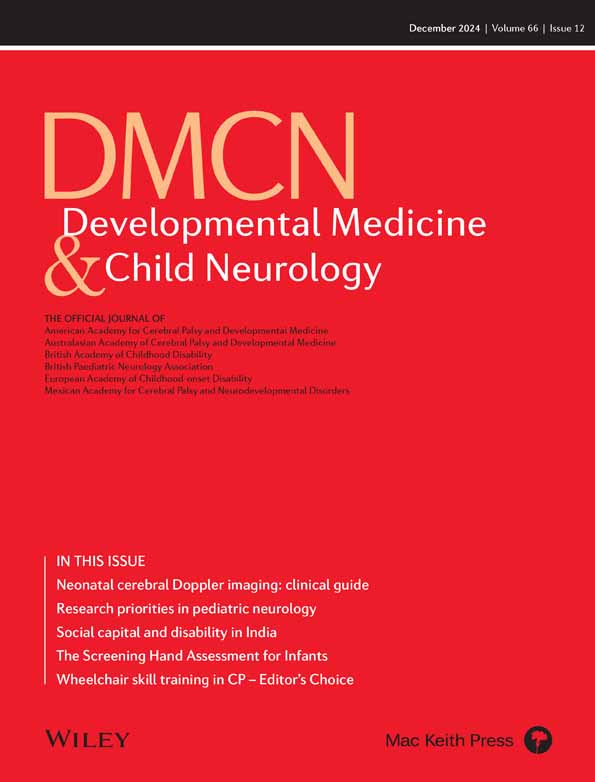Wheelchair skills training improves power mobility and participation in young people with cerebral palsy
This original article is commented by Best and Kirby on pages 1540–1541 of this issue.
Abstract
Aim
To explore the effect of a 4-week structured power wheelchair skills training programme (WSTP) intervention on mobility skills and participation in children and young people (CYP) with cerebral palsy (CP).
Method
This was a one-group, repeated-measures study; baseline, intervention, and retention phases, each lasting 4 weeks, were used. Twelve participants (three females, nine males) with a mean age of 15 years 11 months (SD = 3 years 6 months) classified in Gross Motor Function Classification System levels IV and V participated in the study. To be included in the study, individuals had to be aged 6 to 21 years and currently using a power wheelchair. Participants received 12 WSTP training sessions of 45 minutes, 3 times per week. Power mobility skills were assessed using the Wheelchair Skills Test (WST) before baseline, before the intervention, after the intervention, and at the follow-up; mobility-related participation was assessed with the Canadian Occupational Performance Measure (COPM). Generalized mixed models with Bonferroni correction were used to assess the differences between the assessment points (p < 0.05).
Results
Statistical analysis showed a 10.4% (12.5) increase in WST total scores (p < 0.001) after the intervention compared to before the intervention, and a 1-point (0.9) increase in the COPM performance subdomain (p = 0.002).
Interpretation
Power mobility skills and mobility-related participation improved after a 4-week WSTP intervention in CYP with CP. Thus, task-based power mobility skills training based on the WSTP, and in line with individualized needs and capabilities, taking place in a natural environment, should be recommended. Power mobility skills training needs to be structured and individualized; the training interventions must consider the individual, the task, and the environment.
Abstract
This original article is commented by Best and Kirby on pages 1540–1541 of this issue.
Open Research
DATA AVAILABILITY STATEMENT
The data that support the findings of this study are available from the corresponding author upon reasonable request.




